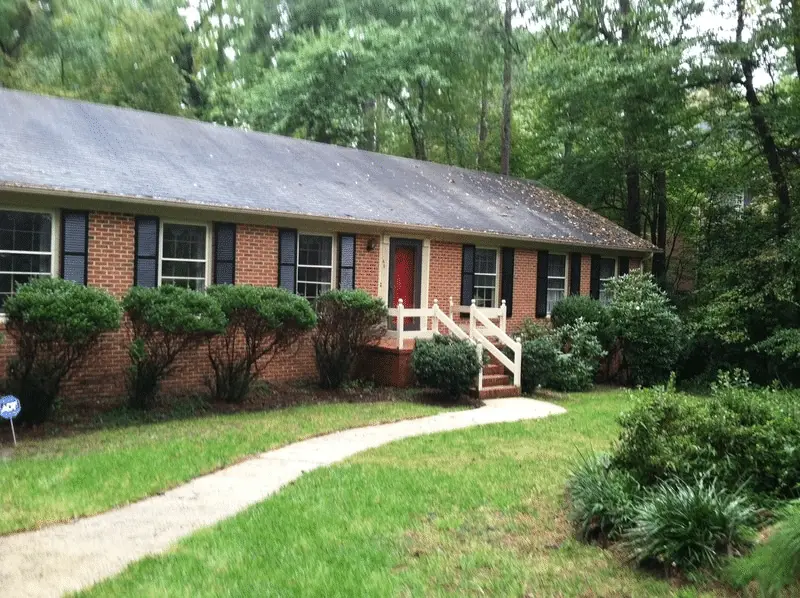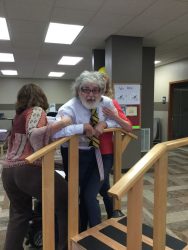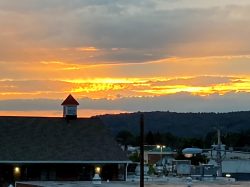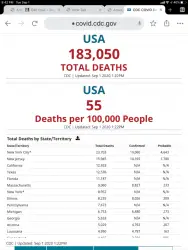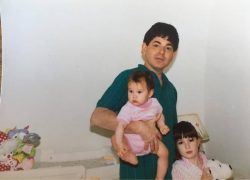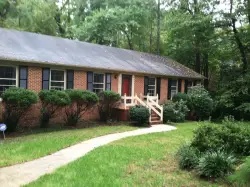COVID-19 Demands A New Utilitarian Architecture, USA Pandemic Housing News
Joel Solkoff’s Column Vol. VI, Number 4
Mandarin translation by Lin Zhao Yang added Nov 21, 2010:
COVID-19 Demands New Architecture
++++++++++++++++++++++++++
Sep 5, 2020
COVID-19 Demands New Utilitarian Architecture.
Covid 19 has accelerated the need for a new utilitarian architecture: Architecture for the vulnerable (like me)
This photograph shows your columnist requiring assistance so I could stand upright for more than one minute. Two physical therapists helped. The date was October 2019 when three times a week I drove my electric wheelchair (scooter) for less than five minutes from my Liberty Lodge residential hotel room down past the parking lot to Phoenix Rehabilitation’s Lycoming County Office in Pennsylvania, US. My younger daughter Amelia Altalena took this photograph while on a brief break from being a police officer on active duty in the South.
“All Politics are local.” — Former Speaker of the United States House of Representatives – Tip O’Neill
Today, in Covid-spreading Lycoming County,—where the worst has not YET happened—returning to physical therapy would be unsafe. For movement–essential for paraplegics like me– I have to create an in-room gymnasium of sorts. Nothing fancy. Sinks at a safe height so I can I can briefly pull myself upright and then safely return to the wheelchair.
Architects: When you design housing, do you keep such necessities in mind? Or do you design from an Americans with Disability Act or other government official standards created by people other than those of us who do not walk, hear, or see?
This is a screen shot I took of me as an avatar in a 3-D gaming engine model
Who is an architect? This is the theme of today’s September 2020 US Covid-19 column.
Let us start with my editors
Here at e-architect who for the past ten years have supporting me in my steadily increasing grandiosity:
e-architect co-founders Isabelle Lomholt and Adrian Welch introduce the first Architects for Change webinar this summer
Sunset for the vulnerable and what architects can do about it
Sunset photograph by me taken from the wheel-chair friendly balcony at the entrance to my residential hotel room. For nearly two years, I have lived at Liberty Lodge a three-story structure until April housing migrant construction workers and those in the oil shale industry. This summer, these workers had left.
My hotel and the EconoLodge complex adjacent have become welfare hotels housing refugees from frequent downtown Williamsport fires and unsafe living conditions. Last month, a man living on my floor–four doors down— was arrested for heroin distribution. Daily the Pennsylvania State Police circle the parking lot writing down license plate numbers then followed by arrests. This new wave of my fellow residents who have not been Covid-19 tested has turned my residence from safe to dangerous to my health.
Dateline: Thursday September 3, 2020. Rural beautiful Lycoming County Pennsylvania, United States. After a lifetime of living somewhere else, this is my perch to learn from its rich architectural history.
Lycoming County—population 116,110—is also the dangerous perch:
+ where I live in a community with severely-limited pandemic testing
+ where health care workers have not been tested regularly
+ where doctors offices and hospitals do not have computer systems capable of handling the data demand of day to day let alone a pandemic
+ where mask-wearing and social distancing practices are openly defied; example. last week my health aide Frank Rasole Jr. (whom everyone calls “Frankie”) attended with his lady friend Jamie a neighborhood swimming pool where over 100 others bathed and frolicked at close distance–few wearing masks
+ where a decaying infrastructure makes inter-county Rust Belt transportation difficult; especially ( as happened not that long ago when I/) one is an ambulance speeding to the hospital and the ambulance is forced to stop because the shocks could not handle the potholes.
When I was a passenger in a central Pennsylvania ambulance forced to stop because the ambulance shock absorbers could not handle the potholes in the road, I asked the attendant to use my iPhone to take this photograph of the driver. N.B. For years now, the American Society of Civil Engineers has repeated given US infrastructure a D+ grade. In February 2020, Tom Smith, ASCE Executive Director. said, “Our nation is at a crossroads.
Deteriorating infrastructure is not only impeding our ability to compete in a thriving economy, but it is also holding back advances to prepare us for the future. Each American family is losing $3,400 in disposable income each year – more than $9 a day – due to poor infrastructure. Modernizing our infrastructure is one of the only areas today where there is bipartisan agreement, and Americans were finally able to hear from the candidates on their ideas to modernize our roads and bridges, water systems, electric grid and more.
We are thrilled many of the candidates have plans devoted to infrastructure and we look forward to working with our nation’s current and future leaders- in a bipartisan manner- to modernize our infrastructure and ensure that our country is sustainable, resilient, innovative and globally competitive.”
Who are the most vulnerable–most likely to die from the Corona virus
I am.
I am a 72 year old paraplegic who has survived cancer four times. Because my spleen was removed, my immune system is compromised. Plus, I am a paraplegic–unable to walk for the past 26 years. My daughters and granddaughters live hundreds of miles away. This year–2020– I had two serious surgeries–each successful despite a regional health care system incapable of handling the Covid-19 pandemic when it will soon strike the Rust Belt of Pennsylvania with disastrous consequences.
During my time here in Williamsport, county seat of Lycoming County, the Jewish community has been supportive (an understatement). Specifically, I am a member of the Orthodox Congregation Ohev Shalom, lover of peace. Ohev Shalom is the only wheel chair accessible synagogue in the area.
My original intention was to publish a photograph of the Ohev Shalom building, constructed in the 1950s. The reality is the architecture of the Jewish religion is the torah scroll. The torah is the first five books of the Old Testament; namely, Genesis, Exodus, Leviticus, Numbers and Deuteronomy.
According to the tradition, when Moses received the Ten Commandments at Mount Sinai God also dictated the Five Books of Moses to Moses. According to the Encyclopedia Britannica, Biblical scholars are united in concluding that was a long time ago, “16th and 13th centuries BCE to after 750 BCE.” Unfortunately, Moses’ transcription has been lost. It was not until between the 7th and 10th centuries of the Common Era (CE) that a compete text of our Bible (known as the Masoretic text) became available.
The Torah scroll here is a faithful reproduction of the Masoretic text written in permanent ink on lambskin.Over the course of the year, all the words in the Torah scroll are chanted. When Congregation Ohev Shalom acquired this new torah scroll earlier this year, I told Synagogue President Larissa Simon I would write a poem to mark the occasion. Because of Covid-19 no celebration took place, no Passover sedar, no regular services. Given the age of our synagogue membership–several of whom are in nursing homes–the pandemic is likely to kill Congregation Ohev Shalom founded over 100 years ago.
Rabbi Hillel asked three rhetorical questions:
Enter the Covid-19 related wisdom of Rabbi Hillel the Elder, our greatest rabbi
If I am not for myself who is for me?
If I am for myself along, what good am I?
If not now, when?
Enter Susan Dooha, Center for Independence of the Disabled, New York (CID-NY):
In answer to Rabbi Hillel’s first question “If I am not for myself who is for me?” Susan Dooha is not only for me, she is me. (Don’t tell her.} During the years when I have been able to walk I have been searching for a powerful disability rights organization that eschews rhetoric and represents me. Susan Dooha’s Center for Independence for the Disabled (CID-NY) is my organization. Susan knows how to win. I am especially interested in her successful law suit against New York City’s homeless shelter system where she is empowered to make changes. I am hereby lobbying her to insist that all barbed wire fencing be removed from New York City housing shelters.
++++
Let us pause on Rabbi Hillel’s questions and return to rural Pennsylvania
Last year, I became friendly with my next door neighbor here on the third floor of Liberty Lodge. My neighbor was a construction project manager for a federally funded project. He did not want to be identified; also, he regarded the project’s out of state architect as irrelevant to the design decisions he ordered his construction workers to perform. Here is the video I made of our four mile expedition to the Lycoming College building site in Williamsport:
Lycoming County is 130 miles ( 209 KM ) northwest of Philadelphia and 165 miles (266 km) East northeast of Pittsburgh.
As I write from RoomP 310 of Liberty Lodge, reality forces me to focus on these facts, Last month (August 2020), a thousand US Americans died each day–the highest rate in the world. Here in the US, an American dies every minute.
Now would be a good time to hear Bruce Springsteen sing the theme song for today’s column:
My City of Ruins (Live at the New Orleans Jazz & Heritage Festival, 2006) by Bruce Springsteen
Published in accordance with YouTube permission standards
Lyrics
My City of Ruins by Bruce Springsteen
There is a blood red circle
On the cold dark ground
And the rain is falling down
The church door’s thrown open
I can hear the organ’s song
But the congregation’s gone
My city of ruins
My city of ruins
Come on, rise up! Come on, rise up!
Come on, rise up! Come on, rise up!
Come on, rise up! Come on, rise up!
Come on, rise up! Come on, rise up!
Come on, rise up! Come on, rise up!
Who is an architect?
There are good architects and bad architects. It is time for degrees and licensed professional architects to understand the reality: The customer is king.
Wake up architects and you engineers and construction executives who comprise the AEC community: You work for me. For ten years, I have been publishing here for e-architect on the necessity to design housing for people like me. People like me are Baby Boomers born after World War II dying in record numbers in US nursing homes designed by architects who did not realize that opening the window and letting in fresh air would prevent pandemic deaths.
![]()
This is a screen shot I took of me as an avatar in a 3-D gaming engine model
++++
Twenty six years ago, when I was losing the ability to walk, I tripped on my feet
I fell against the couch (purchased impulsively after having admired it so) and dislocated my shoulder.
While waiting for the ambulance to arrive, Amelia, then four years old, asked, “Daddy, does it hurt?” I wanted to lie to my daughter, but reality intervened. The pain from my shoulder came so quickly, that all I could say was “Yes.“
Here I stood a few years earlier with Amelia in my arms and my elder daughter Joanna (to your right). I did not realize I was about to become an architect,—paraplegia being the school of hard knocks in lieu of an architecture degree.
This is the house where I lived when I lost the ability to walk. There was no ramp, of course, to make it possible for me to enter the front door of my house. At first, I was able to climb my way up the staircase from the garage where I parked my car.
Worse than the House was the neighborhood. The grocery in Durham, North Carolina ( just down the road) was inaccessible given the absence of sidewalks. Eventually, I began a book “Renovating Existing Housing to Make it Wheel Chair Accessible” with this injunction:
“When you become disabled in the suburbs where the vast majority of US Americans live, the best thing you can do is move.” Moving is what I did to the Silicon Valley of California. In the process, my interaction with the built environment caused ad hoc architect me to make me realize: To make a house a home, the house must comfortably interact with the workplace, the grocery store and other community making sites— requiring an ad hoc architect to become a PNC ad hoc town planner.”
Note: My next column will contain an e-architect exclusive: An hitherto unpublished chapter on designing a bathroom, the most dangerous room in the house for paraplegics like me.
Publishing disability perspective on e-architect
For ten years, I have been publishing for e-architect articles, columns and videos on my disability perspective.
When I began writing here, I thought of myself as an outsider to architects in effect saying, I may not be an architect, but I know people like me who cannot walk nor stand for more than one minute can make your design more more effective. It is in response to the deadly pandemic that I helped e-architect launch the first Architects for Change webinar series organized around Rabbi Hillel’s three questions. The remaining two questions will be discussed in the next column.
To return to quetion “If I am not for myself who is for me? the two principal presenters in July ( stay tuned for more presenters) were Susan Dooha, representing the shameful present, In New York City ( as elsewhere in my country the failure of the design community to prepare for this shameful present is an daily (nay, hourly) concern for the Center for Independence of the Disabled, NY. Please go to the CID-NY website and hit the donate button. Susan needs your money. https://www.cidny.org/]
As a grandfather, my self-concern is for the future as well as whatever present is left to me. Enter Chris Lepine, Director, Zaha Hadid Architects, London who presented the future.
A segment from the Architects For Change webinar series featuring Chris Lepine, London, UK. Chris Lepine has been a member of the Zaha Hadid team since 2006, and has experience in large-scale international projects and the use of advanced digital technology to resolve complex design challenges. Chris was formerly an associate at Foster and Partners where he had many leadership roles in completed, international projects including lead designer and project architect for a prestigious winery in Spain.
He also worked with Foster and Partners’ exclusive Specialist Modeling Group. Chris obtained a Master’s degree at Clemson University in South Carolina, where he received both the top graduate prize and the best thesis project award. He also holds a degree in finance from the University of South Carolina’s Honors College.
My editors beckon: “All right, stop writing, Joel.”
Isabelle Lomholt and Adrian Welch, Editors at e-architect:
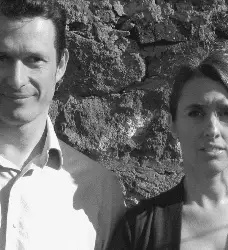
“Good night and good luck,” as Greensboro, North Carolina born Edward R. Morrow, my hero, used to say.
My hero Edward R.Murrow broadcast this 1960 example of classic investigative reporting.This documentary was broadcast on Thanksgiving Day where I watched it at my maternal grandmother’s apartment in Brooklyn. I was 12 years old at the time.Murrow’s documentary shaped my future career in measurable ways.
Note the hideous conditions of farm worker housing. Little effort would find in Florida and Canada- where inadequate housing for migrant workers in danger of spreading the Corona virus have been reported.
Think Black Lives Matter when you hear the words of a grower Murrow quoted: “We used to own our slaves. Now we just rent them.”
Joel
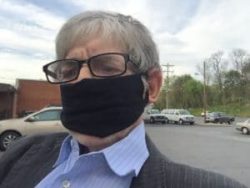
Selfie, Lycoming County, Pennsylvania, USA
[email protected] 2019: East Third Street Williamsport, PA, US 17701
Please feel free to phone me at US 570-772-4909
Copyright © 2020 by Joel Solkoff. All rights reserved.
Coming soon to this column, Abraham Lincoln’s Washington. While pursuing the hotly contested Republican nomination in 1860, Lincoln gave a speech of his soon-to-be Civil War (1861-1865) Age which reverberates in our Covid-19 Age (March 2020 and for the many years that will follow)
Abraham Lincoln said, “A house divided against itself cannot stand.”
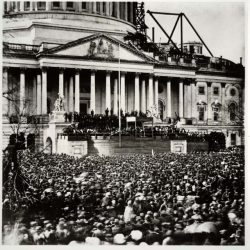
Architects take note and do something about the coming reality of billions of additional emergency housing dollars being poured into combatting Covid-19. As this 1861 photo shows, the Capital was under construction when Lincoln took the oath of office “to protect and defend the United States against all enemies foreign and domestic.
The following month, when the Civil War began, there was a lot of defending required to do and few resources left to do it. Even so, President Lincoln over the worst years of the bloody Civil War, made sure the Capitol dome was completed and expanded following the British in the War of 1812 who burned down the Capital (and also portions of the White House).
Washington DC was a malarial swamp at the time. President Lincoln could have cleaned up the swamp in the area now The Mall and cleaned out the mosquitos. The mosquitos may very will have given Lincon’s beloved son Todd the malaria that killed him. Princeton historian Jon Mecham insists that completing the Capitol (which happened four years later) was critical to the War effort whose purpose was to bring our country together.
Equally critical to the Covid-19 battle, Professor Meacham insists, is establishing the kind of strong federal process comparable to the US response to The Civil War and more immediately in daily comparisons to he bombing of Pearl Harbor. I will have you remotely visit my Capitol and the Washington DC designed by Pierre L’Enfant whih did not turn out entirely as he had planned.
Architecture Columns
Architecture Columns – chronological list
Special Wooden Floors for Renzo Piano’s Whitney in New York
New York City Mayor Bill de Blasio, Queens Library
Renzo Piano’s Whitney Neighborhood
Disability-Access Architecture
US Architecture
Joel Solkoff’s Column Vol. IV, Number 2
Joel Solkoff’s Column Vol. IV, Number 1
Special Wooden Floors for the Whitney
Belt and Suspenders Routine – Joel Solkoff’s Column
Joel Solkoff’s Column Volume II No. 6
Joel Solkoff’s Column, Vol.II, Number 7
Comments / photos for the COVID-19 Demands New Utilitarian Architecture – page welcome

